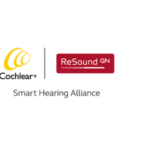By Barbara Buck, Principal Clinical Project Manager at Cochlear Americas
There have been dramatic changes to cochlear implants and the way professionals deliver care over the past 30 years. In 1990, there were a small number of clinics providing this technology to approximately 3,000 Nucleus® patients. The surgical procedure took several hours and included a hospital stay. The programming at activation was done over a two-day period measuring every electrode with a body-worn sound processor and counseling focused on detection of sound.
Fast forward to 2020, and we have expanded access for over 450,000 Nucleus patients. The surgical portion is now an outpatient procedure. Programming at activation takes, on average, less than 30 minutes using objective measures like AutoNRT™, streamlined programming has been incorporated, there are behind-the-ear and over-the-ear processors that can connect to a world of devices via Bluetooth®. Counseling is focused on accessory use, telephone use and hearing in-noise which represents the bulk of the typical 90-120-minute activation appointment.1,2,3
The ability to provide care in these different ways has evolved with other technologies such as the internet, wireless connectivity, mobile phones and the “cloud.” Likewise, the inclusion of innovative tools in Cochlear’s portfolio, such as myCochlear, Hear Always, Remote Check, Cochlear Link, and SignHEAR, mixed with changes to indications and outcomes can assist clinicians in providing care in different ways throughout the patient’s hearing journey. The next step in increasing CI access is to consider how the effective use of technology can provide care based on the needs of adult CI patients within a changing healthcare landscape.
There is a growing need for care. As incidences of hearing loss increase, many clinics must see a growing number of patients in a shorter amount of time, while maintaining the same staff headcount. This, on top of a changing healthcare landscape and recent global pandemic, has made treating hearing health more complex and has placed a further burden on healthcare facilities today. It has also shed light on the need to continue to partner with professionals, to develop and refine guidelines to help support clinic efficiency, reduce clinic burden for non-billable time and continue to work to improve patient hearing outcomes and satisfaction.
One of the ways healthcare professionals across a variety of modalities have addressed these challenges is by applying an evidence-based approach to their practice. By using a shared combination of clinical expertise, patient values/expectations and data/evidence to help guide clinical decision making, the audiology community can re-shape aspects of the adult cochlear implant delivery care model. Data collection and analysis can be used to determine what aspects of the delivery model can potentially be modified. Often “Deciding what not to do is as important as deciding what to do.”4
As a result of new technologies, the CI industry now has access to a wealth of additional data that was previously inaccessible, which can be used to create guidelines, tools, services and products based on evidence. An evidence-based practice and a guided protocol can help determine if the recipient is meeting the minimum key hearing and satisfaction milestones during the first year of CI use and the integration of self-administered and remote care tools, services and products can reduce the support burden on the clinic and empower the patient. This consistency could ultimately improve clinic efficiency, reduce the clinic burden, improve patient outcomes and hearing satisfaction of patients.
Cochlear can help professionals deliver consistent and efficient care by providing guidance on when to deliver these in-clinic, self-administered and remote care tools that support clinic sustainability. A future care model can be designed to guide care for most adult CI patients. By providing more consistency and streamlining care delivery for the 80%, we can help provide clinicians with more time to address difficult and/or complex issues (the 20%), and/or help accommodate clinic growth and help maneuver a changing healthcare landscape.
If you’re interested in learning more about how Cochlear’s tools can be incorporated into your clinical practice or to partner with Cochlear on data collection that can be used to provide insights into the continuous improvement of the clinical care model (like hearing outcomes and satisfaction data, patient compliance with follow-up visits and integration of self, in-clinic or remote care tools), please reach out to your local Cochlear representative for more information.
Check out this AudiologyOnline course to learn more!
References:
- Cochlear Implant Fitting: Current Practice in Adults 2018. Data on file at Cochlear Americas.
- Fuel Medical: Current CI Practice clinic observations 2017. Data on file at Cochlear Americas.
- Camille Dunn, University of Iowa presentation, Proceeding from ACIA 2017.
The Bluetooth® word mark and logos are registered trademarks owned by Bluetooth SIG, Inc. and any use of such marks by Cochlear is under license.


